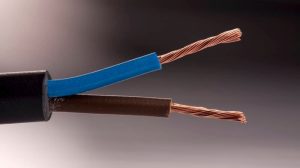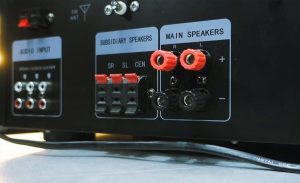Breaking in a new subwoofer is an essential step that many audio enthusiasts overlook. Just like a new pair of shoes need time to mold to your feet, your subwoofer needs time to reach its peak performance. This process, often called “burn-in” or “break-in,” allows the mechanical components of your subwoofer to loosen up and start working as intended by the manufacturer.
Contents
- Why Breaking In Your Subwoofer Matters
- How Long Does Breaking In a Subwoofer Take?
- Signs Your Subwoofer Needs Breaking In
- The Best Method to Break In Your Subwoofer
- What Music Works Best for Breaking In Subwoofers?
- Common Mistakes to Avoid During Break-In
- Tips for Optimal Subwoofer Performance After Break-In
- Breaking In Different Types of Subwoofers
- What to Expect: Before and After Break-In
- Is Breaking In Your Subwoofer Really Necessary?
- Final Thoughts
Why Breaking In Your Subwoofer Matters
When you first unbox your subwoofer, the suspension components (surrounds and spider) are stiff and tight. These parts need time to flex and become more pliable. A properly broken-in subwoofer delivers deeper bass, better sound quality, and increased longevity.
The break-in process affects several key components:
- Surround: The flexible ring around the cone needs to soften
- Spider: The corrugated support that centers the voice coil requires flexibility
- Voice Coil: The wire that moves the cone needs to settle into place
- Suspension System: The entire movement mechanism benefits from gradual use
Think of it like this – a new car engine runs better after a few hundred miles when all parts have had a chance to work together. Your subwoofer works the same way.
How Long Does Breaking In a Subwoofer Take?
The break-in period varies depending on the subwoofer type, brand, and build quality. Generally, expect:
- Basic Entry-Level Subwoofers: 10-20 hours of playtime
- Mid-Range Subwoofers: 20-40 hours
- High-End Audiophile Subwoofers: Up to 100 hours
Some audiophiles report hearing noticeable improvements even after the first few hours of use. The process happens gradually – you’ll notice your bass becoming progressively deeper and more controlled over time.
Signs Your Subwoofer Needs Breaking In
How can you tell if your subwoofer needs breaking in? Look for these telltale signs:
- Bass sounds tight or constrained
- Limited low-frequency response
- Stiff movement when you gently push the cone (with power off)
- Lack of nuance in bass notes
- Mechanical-sounding bass rather than natural warmth
These characteristics are normal for new subwoofers and will improve throughout the break-in process.
The Best Method to Break In Your Subwoofer
Let’s dive into the step-by-step process of breaking in your new subwoofer properly:
Method 1: The Natural Approach (Recommended)
This method involves regular use at moderate volumes:
- Set up your subwoofer correctly according to manufacturer guidelines
- Start with low volume (about 25-30% of maximum) for the first few hours
- Play bass-heavy music across different genres – electronic, hip-hop, and orchestral work well
- Gradually increase volume over several days, never exceeding 60-70% during break-in
- Vary the content – switch between music, movies, and test tones
- Give it rest periods – allow the subwoofer to cool down after a few hours of use
This method closely mimics real-world usage and puts less strain on the components.
Method 2: Dedicated Break-In Sessions
If you want to speed up the process:
- Find bass-heavy content – specialized break-in tracks or bass test CDs work well
- Play at moderate volume (40-50%) for 4-6 hour sessions
- Use frequency sweeps that gradually move from higher to lower frequencies
- Insert cooling periods of 1-2 hours between sessions
- Repeat daily until you reach the recommended break-in hours
Method 3: Overnight Break-In (Use Caution)
Some users opt for overnight sessions:
- Set volume at 25-30% (lower than daytime sessions)
- Play continuous bass content for 8-10 hours
- Ensure proper ventilation around the subwoofer
- Monitor for excessive heat during the first attempt
Important note: Never leave a subwoofer unattended at high volumes, especially during its break-in period.
What Music Works Best for Breaking In Subwoofers?
The ideal music for breaking in subwoofers contains varied bass frequencies that exercise the full range of movement:
- Electronic Music: Daft Punk, Deadmau5, or Massive Attack
- Hip-Hop: Kendrick Lamar, Drake, or J. Cole
- Rock with Prominent Bass: Tool, Muse, or Red Hot Chili Peppers
- Orchestral Pieces: Those featuring timpani and double bass
- Movie Soundtracks: Hans Zimmer compositions often work wonderfully
Vary your content to ensure your subwoofer experiences different bass frequencies and patterns.
Common Mistakes to Avoid During Break-In
Many new subwoofer owners make these mistakes:
- Cranking the volume too high too soon – this can damage the voice coil or suspension
- Using pure test tones exclusively – these don’t represent real-world usage
- Expecting immediate results – break-in is gradual
- Breaking in at maximum volume – this stresses components unnecessarily
- Not giving the subwoofer rest periods – components need time to cool down
- Using very low frequencies immediately – start with higher bass frequencies first
Tips for Optimal Subwoofer Performance After Break-In
Once your subwoofer is properly broken in, follow these tips to maintain optimal performance:
- Run room calibration again since the subwoofer’s properties have changed
- Adjust crossover settings to blend with your main speakers
- Consider subwoofer placement – corner placement amplifies bass but may reduce accuracy
- Check phase alignment with your main speakers
- Listen for distortion at higher volumes and adjust accordingly
- Consider acoustic treatment for your room if bass seems uneven
- Keep it clean – dust can affect performance over time
Breaking In Different Types of Subwoofers
Different subwoofer designs may require slightly different approaches:
Passive Subwoofers
- Break in gradually with an appropriate external amplifier
- Pay attention to power handling recommendations
- Allow longer cooling periods between sessions
Ported (Bass Reflex) Subwoofers
- These typically require longer break-in periods
- Pay attention to port noise during break-in
- Avoid extremely low frequencies below the port tuning frequency
Sealed Subwoofers
- Often break in more quickly than ported designs
- Can handle lower frequencies during initial break-in
- Usually show more dramatic improvements after break-in
Multiple Subwoofers
- Break in each subwoofer individually before using them together
- Calibrate the system after all units are properly broken in
What to Expect: Before and After Break-In
Here’s what changes you’ll likely notice after proper break-in:
Before Break-In:
- Bass sounds tight and somewhat constrained
- Limited low-frequency extension
- Less detailed bass response
- Mechanical-sounding low frequencies
- Potential slight distortion at moderate volumes
After Break-In:
- Deeper, more authoritative bass
- Improved articulation of bass notes
- Better transient response (quick bass hits sound cleaner)
- Less distortion at higher volumes
- More natural and musical bass quality
- Extended low-frequency response
Is Breaking In Your Subwoofer Really Necessary?
Some audio experts debate the necessity of formal break-in procedures. While certain high-end manufacturers specifically recommend it, others consider it less crucial.
The reality is that all mechanical components with moving parts undergo physical changes with use. Whether you follow a structured break-in process or simply use your subwoofer normally, these changes will happen naturally over time.
The main benefit of an intentional break-in process is that it ensures these changes happen gradually and safely, potentially extending the life of your investment.
Final Thoughts
Breaking in your subwoofer isn’t complicated, but it does require patience. The improvement in sound quality is well worth the wait. Take your time, enjoy the process of discovering how your subwoofer’s sound evolves, and you’ll be rewarded with richer, deeper, and more nuanced bass.
Remember that the ultimate goal is to enjoy your audio system. The break-in process is just the first step in a long relationship with your subwoofer. Once properly broken in, your subwoofer will deliver the kind of bass that transforms your listening experience, bringing movies and music to life in ways you never imagined.
So give your new subwoofer the time it needs to reach its full potential. Your ears will thank you.






